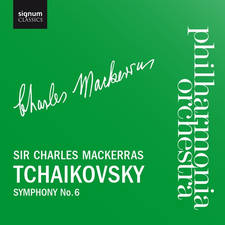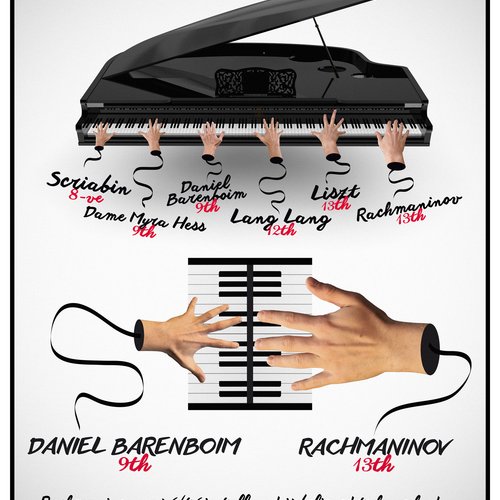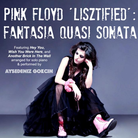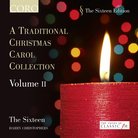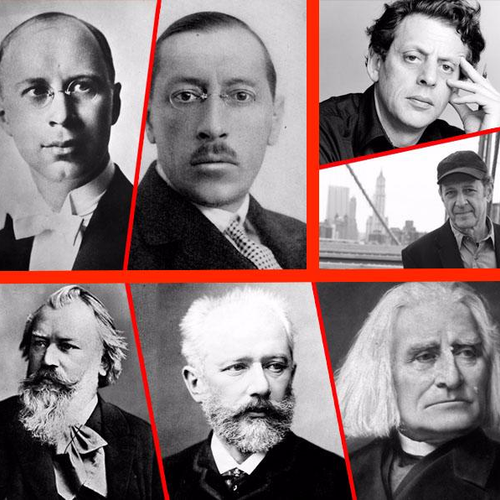Weimar - Cradle Of The Romantics
The German city of Weimar – home to Liszt [pictured], Goethe and Schiller – was at the forefront of the Romantic movement.
On a Monday morning in the corner of a beautiful park in a provincial German town, autumn leaves are swirling down towards the cobblestones and the strains of Liszt’s Rhapsody No.3 float towards me on a chilly zephyr. Three hours’ drive south of the bustling capital of Berlin, Weimar is almost surreally pretty, as well as being a cultural haven to rival the better-known Leipzig or Dresden. But there’s some sharp-elbowed jostling going on in defiance of the peaceful surroundings.
I’m in a crowd of Liszt enthusiasts, queuing outside the composer’s erstwhile summer home on the 200th anniversary (almost to the day) of the great man’s birth. Liszt was lucky enough to be feted in his own lifetime – women would fight over his broken piano strings after his recitals – and in the 1840s the phenomenon surrounding him was dubbed “Lisztomania”. The programme of the festival in his honour bears the title “Lisztomania 2011”. It’s pretty apt.
Despite the temperature and the early hour, there’s plenty of competition for the prize of entrance to a recital of Liszt’s music on his Bechstein piano in the very rooms he lived and taught in, and as I listen to a talented student of the Liszt School of Music Weimar tickling Liszt’s own ivories, it’s as if his spectre is right beside me.
Today Weimar attracts a cultured crowd, drawn not only by the legacy of Liszt but by those of the other artistic types who settled here: Bach, who was court organist, violinist and concertmaster for 10 years from 1707; his godson Johann Ernst, who became the first Kapellmeister in 1756; and Hummel, who also filled that post in 1819, and invited the finest musicians of the day to perform in the town, most notably Paganini.
In the late 18th and early 19th century, as the Romantic era gathered pace, Weimar really was the intellectual centre of the country; Goethe and Schiller were also invited to the court of the enlightened Duchess Anna Amalia, and later her son Duke Karl August.
I’m here with a group of passionate and knowledgeable music enthusiasts, eager to learn more about their hero and to walk in his footsteps. Our guide is John Bryden, a true polymath: concert pianist, organist, pedagogue and veteran tour guide for ACE Cultural Tours, which runs educational trips to musical cities, complete with private recitals.
These special concerts are the crowning glory of the whistle-stop tour; we’re also accompanied by organist Nicholas Wearne, who gives three recitals that can do more than any museum visit to bring us closer to Liszt’s spirit. Weimar has strong links to organ playing, with a tradition dating back to Bach’s days there.
In the church of St Peter and St Paul, where Liszt’s friend Johann Gottlieb Töpfer was organist between 1830 and 1870, we were treated to a performance of Liszt’s Adnos Ad Salutarem, one of the first pieces to redefine the organ as a concert-hall instrument. It was a rare treat to hear this virtuosic masterpiece in a location undoubtedly known to Liszt himself.
After that climax, it was back to the tourist crowds at the site of Schiller’s former home, taken over by a Liszt exhibition for the anniversary. The museum had gathered a whole wall of original paintings, including rare sketches of Liszt’s partner Princess Carolyne von Wittgenstein, evidently quite a beauty.
Preserved under glass lay the aging souvenirs sold to boost profits on Liszt’s concert tours, including cameos of that distinctive Roman profile. Merely cheap nick-knacks then, the passing centuries have rendered them museum pieces. Directly below, the queues in the gift shop for Liszt pencils, badges and bookends prove the gravy train is still running, though its figurehead is long gone.
As I step back into the calm of Weimar, I reflect that Liszt came here to escape all that, seeking a haven in which to settle with Carolyne and focus on composing after his phenomenally successful international touring career. And what a place to do so.
It’s easy to imagine the town’s charm to the weary celebrity musician. Even today its compact, tranquil centre has very little traffic, an abundance of good-value coffee shops and restaurants and a rambling park that was stunning at the turn of the seasons.
The market square is crowded with stalls selling flowers and vegetables, and the competing Bratwurst vans at each corner do a roaring trade. There’s a distinct Italian vibe to the town too; the best chef in Weimar is reportedly an Italian, and the popular ice cream shop on Theatreplatz 1 is actually named Eiscafe Venezia; inside, faced with an almost daunting tower of chilled sweet treats, I half-expected to look up to see the Basilica.
Our tour also took in visits to Goethe’s home, his garden house, and the Duchess Amalia Library. The guardians of the town’s cultural treasures tend to display a dragon-like commitment to the task – they aren’t above confiscating a walking stick from a hapless visitor lest it scratch an original floor – and anyone who wishes to enter the hallowed ground of the Rococo Hall in the Duchess Amalia Library must wear soft-soled slippers over their shoes, which is frankly a health hazard.
But there is good reason: the library collection numbers thousands of manuscripts and over a million books, dating from as far back as the 9th century, and they’re not simply on display: gaps on the shelves indicate that volumes have been removed to the reading room for the benefit of researchers who visit from all over the world. There’s no evidence now of the 2004 fire that decimated 50,000 volumes; the impressive repair job reportedly cost $18m.
But it’s the music that really brings the town alive, and being with the ACE experts ensures access to some of the most popular festival concerts. An intimate salon performance of Schubert and Liszt songs by baritone Mario Hoff and pianist Hans-Christian Steinhöfel took place in the splendid surroundings of the Weimar palace, overlooked by busts of Greek Gods and mythical creatures.
Hoff’s subtle yet expressive tone meant the emotional impact could be felt even by those with no German, and the obviously warm, intuitive relationship between the performers spilled over most effectively in the more humorous of the Schubert songs.
The following evening, the big draw was maestro Christian Thielemann and pianist Konstantin Scherbakov at the Weimarhalle, performing Liszt’s Piano Concerto No.2 and Les Préludes, a popular programme possibly chosen for the benefit of the TV cameras. It went down a storm with the audience.
Our hotel later hosted the post-concert reception, at which Thielemann was hailed in a manner presumably not dissimilar to that once enjoyed by Liszt. He was leading the impressive Projektorchester, a combination of students of the Liszt School of Music Weimar and musicians of the Staatskapelle Weimar, who merged to produce a fabulous, cohesive sound.
One of the final perks of being an ACE visitor was a private tour of the school. After the potted history lessons of the previous few days, here was a chance to see into the cloistered world of the musicians of tomorrow, drawn to the town by the teachers – including cellist Wolfgang Emanuel Schmidt, violinist Andreas Lehmann and pianist Peter Wass to name a few – and the chance to study in a place so steeped in classical music folklore.
The building has a hundred grand pianos, the vast majority of them Steinways – but apparently the piano professors insist that students need to practise on other types too. And there’s a state-of-the-art recording studio where students can hear their performances played back to them.
Sound engineer Matthias Middelkamp says, “The recordings are very pure and give a neutral reflection to the students of how they sound. It can be a useful shock!” Perhaps it also comes in handy for the rising stars who go on to forge recording careers.
As we prepared to head back to reality at the end of the tour, our tireless guide John Bryden and his talented organist friend Nicholas Wearne went beyond the call of duty by giving us a final recital of piano duets by Mendelssohn, Mozart and Dvořák, ending with an energetic rendition of the Slavonic Dances that left their eager audience calling for an encore.
And we got one: the following morning, even as the coach was pulling in to collect us, Bryden dashed off a final Bach sonata to fortify us for the journey home. What a trip: history, culture, good food and wine, all to a live soundtrack of music in the town that inspired it.
As Goethe himself said of Weimar, “Where else can you find so many good things in such a small place?”
Where indeed?
